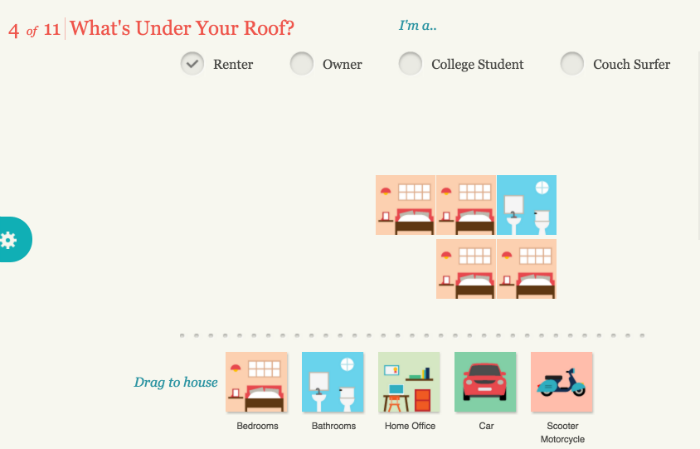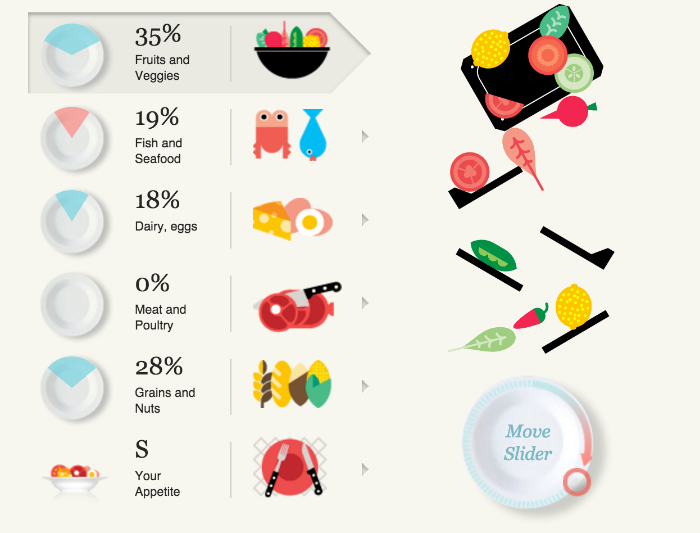You can measure your carbon footprint, and impact on the environment easily with certain apps. Now, there’s an app that calculates something consumers may not even be aware of because it's hard to see: Their slave labor footprint.
The app is called Slavery Footprint, and walks you through a series of questions starting with what kind of house you live in to what types of foods (even spices) you eat. It then adds all of that up to calculate how much your lifestyle contributes to slave labor.
The data may not be an exact one to one in terms of connecting your unique life to slave labor. Instead, it is a great way to better understand how various consumer habits are connected to global markets that feature slave labor in certain parts.
The app starts by asking where in the world you live, then goes into whether or not you own or rent a place. This is where I learned that 200,000 children work in India’s carpet belt in Uttar Pradesh making carpet for cars and homes.

Then the app asks what foods you regularly purchase and consume. It takes you step by step including listing spices, coffee and tea, and asks if you purchase from an ethical source and how often.

Next, the app asks about products in your medicine cabinet. You can learn a lot of surprising facts here, for instance you can learn that sparkles are not as bright and shiny as they seem when it comes to makeup. Mica is the ingredient in makeup sparkles. Some of the sources of Mica rely on the tens of thousands of children in India that mine the mineral for use in makeup. Guess I’ll be going for matte eyeshadows this Spring.
At this point, you’re getting closer to finding out your slavery footprint. Question number seven asks about jewelry. Do you own diamonds, precious stones, gold, silver, or platinum? These rare stones and minerals often come from mines controlled by governments and overseen by armies in developing countries where the conditions and working environment are some of the most dangerous in the world.
The last two categories fall heavily on women, but the next category is something nearly everyone on the planet has access to now--electronics. You can fall into one of five categories on a scale of technophobe to gadget geek in the app.

Then we come to sporting goods. Apparently, to make a soccer ball in China, manufacturing staff will sometimes work up to 21 hours in one day.
Clothing is assessed as well. Did you know 1.4 million children have been forced to work in Uzbek cotton fields? There are fewer children in the entire New York City public school system than that.
The last questions gets intimate and asks how many times you’ve paid for sex. (Hopefully your answer here is zero!) Sadly, sex slavery is prevalent throughout the world.
At least 20.9 million children and adults are bought and sold worldwide into commercial sexual servitude, forced labor and bonded labor.
Slave labor exists throughout the world, and some products use labor that takes advantage of underprivileged communities, exploiting children and adult workers more than others.
It’s important to know and recognize these products in order to end the use of slave labor. Too often consumers are unaware what goes into the making of the products they use, and knowing is the first step to bringing about progressive change.
For example, cutting back on shrimp is a good place to start. If everyone stopped eating shrimp for one day, laborers in the shrimp industry in Southeast Asia wouldn’t have to work the 20 hour days, peeling 40 lbs of shrimp each.
Few people in the world live a life unconnected to slave labor. I calculated my total and was shocked to find that 49 slaves work for me!
Slavery Footprint has petitions you can sign to encourage companies to join and become slave labor free, and a list of companies you have to check out that have ethical sourcing and do not take advantage of workers.
What you buy and consume has a huge impact on the world. Check out Slavery Footprint to calculate your impact on slave labor in the global market and see where you can make changes to lessen slave labor in the world.
NOTE: Slavery Footprint is not connected with Global Citizen and its conclusions about companies activities are entirely its own and do not necessarily represent the view of Global Citizen or its partners.